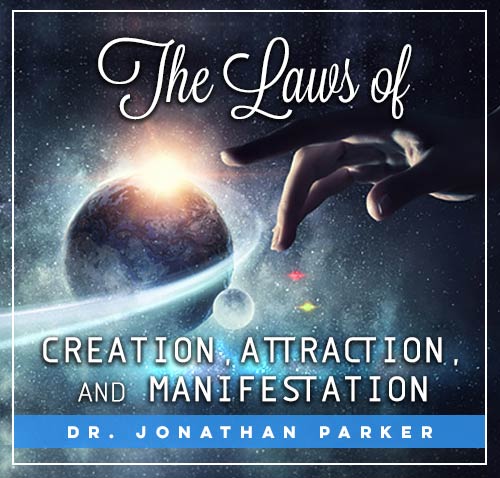Understanding Laws of the Universe

Looking for more amazing products? Check out our online store and explore our collection here! Happy shopping!
Before diving in, please note: This post is for informational purposes only. If you’d like to know more about how we approach topics, feel free to check out our friendly Disclaimer Page.
Hey there, amazing readers! 
We’re committed to delivering quality posts, and your support (even just sticking around despite the ads) means everything to us. So, bear with us, and thanks for helping us keep the good vibes rolling. Now, on to the fun stuff!
TRANSLATE BUTTON AT THE END OF THE ARTICLE
Introduction to Laws of the Universe
Have you ever looked up at the night sky and wondered about the underlying principles that govern the cosmos?
The laws of the universe are the fundamental rules that dictate how everything in the universe behaves, from the tiniest subatomic particles to the vast galaxies.
These laws are the building blocks of our understanding of the natural world and play a crucial role in shaping the way we perceive the universe around us.
Newton’s Laws of Motion
One of the most famous sets of laws in physics is Newton’s Laws of Motion, formulated by Sir Isaac Newton in the 17th century.
These laws describe the relationship between an object and the forces acting upon it.
The first law states that an object at rest will stay at rest, and an object in motion will stay in motion unless acted upon by an external force.
The second law explains how the acceleration of an object is directly proportional to the force acting on it, while the third law states that for every action, there is an equal and opposite reaction.
The Law of Conservation of Energy
The law of conservation of energy is a fundamental principle in physics that states that energy cannot be created or destroyed, only transformed from one form to another.
This means that the total energy of a closed system remains constant over time.
For example, when a ball is thrown into the air, its potential energy is converted into kinetic energy as it falls back to the ground.
This law underpins many aspects of modern physics and has far-reaching implications for our understanding of the universe.
Einstein’s Theory of Relativity
Albert Einstein’s theory of relativity revolutionized our understanding of space, time, and gravity.
The theory is divided into two parts: special relativity and general relativity.
Special relativity deals with the relationship between space and time, while general relativity describes the force of gravity as a curvature of spacetime.
Einstein’s theory has been confirmed through numerous experiments and observations and continues to shape our understanding of the universe on a grand scale.
The Laws of Thermodynamics
The laws of thermodynamics are fundamental principles that govern the behavior of energy and matter in the universe.
The first law, also known as the law of conservation of energy, states that energy cannot be created or destroyed, only converted from one form to another.
The second law introduces the concept of entropy, which describes the tendency of systems to move towards a state of disorder or randomness.
The third law states that as the temperature of a system approaches absolute zero, its entropy also approaches zero.
Quantum Mechanics and Uncertainty Principle
Quantum mechanics is the branch of physics that deals with the behavior of matter and energy on the smallest scales.
It introduces the concept of particles behaving like waves and the phenomenon of superposition, where particles can exist in multiple states simultaneously.
One of the key principles of quantum mechanics is the uncertainty principle, formulated by Werner Heisenberg, which states that it is impossible to know both the exact position and momentum of a particle simultaneously.
This principle has profound implications for our understanding of the universe at the quantum level.
Law of Universal Gravitation
The law of universal gravitation, formulated by Sir Isaac Newton, describes the gravitational force between two objects with mass.
The force of gravity between two objects is directly proportional to the product of their masses and inversely proportional to the square of the distance between them.
This law explains why objects fall to the ground, why the planets orbit the sun, and why galaxies are held together by gravity.
The law of universal gravitation is a fundamental principle that governs the motion of celestial bodies in the universe.
Laws of Electromagnetism
Electromagnetism is one of the fundamental forces of nature, encompassing both electricity and magnetism.
The laws of electromagnetism describe how electrically charged particles interact with each other through electromagnetic fields.
One of the key principles of electromagnetism is Coulomb’s law, which states that the force between two charged particles is directly proportional to the product of their charges and inversely proportional to the square of the distance between them.
Maxwell’s equations further elucidate the relationship between electric and magnetic fields and form the basis of classical electromagnetism.
Conservation of Mass and Energy
The principle of conservation of mass and energy states that the total mass and energy in a closed system remain constant over time.
This principle is encapsulated in Einstein’s famous equation, E=mc², which relates mass and energy as interchangeable forms.
This means that mass can be converted into energy and vice versa, as demonstrated in nuclear reactions.
The conservation of mass and energy is a fundamental law that governs the behavior of matter and energy in the universe and has profound implications for fields such as nuclear physics and astrophysics.
The Law of Entropy
The second law of thermodynamics introduces the concept of entropy, which is a measure of the disorder or randomness of a system.
The law of entropy states that in any isolated system, the entropy tends to increase over time, leading to a state of maximum disorder or equilibrium.
This law explains why hot coffee cools down, why a dropped glass shatters, and why stars eventually burn out.
Entropy is a fundamental concept in physics and has implications for fields ranging from cosmology to information theory.
Understanding Quantum Entanglement
Quantum entanglement is a phenomenon in quantum mechanics where two particles become connected in such a way that the state of one particle is dependent on the state of the other, regardless of the distance between them.
This phenomenon, famously described by Einstein as "spooky action at a distance," has been confirmed through numerous experiments and has profound implications for our understanding of the nature of reality.
Quantum entanglement is a key feature of quantum mechanics and is currently being explored for applications in quantum computing and cryptography.
Applications of Laws of the Universe
The laws of the universe have far-reaching applications in various fields, from technology to medicine.
For example, our understanding of Newton’s laws of motion is crucial for designing spacecraft and predicting the motion of celestial bodies.
The principles of thermodynamics underpin the design of engines and refrigeration systems.
Electromagnetism is essential for the functioning of electrical devices such as generators and transformers.
Quantum mechanics is at the heart of modern technologies like semiconductors and lasers.
By applying the laws of the universe, scientists and engineers can unlock the secrets of the cosmos and harness the power of nature for the betterment of society.
Conclusion
In conclusion, the laws of the universe are the fundamental principles that govern the behavior of matter and energy in the cosmos.
From Newton’s laws of motion to Einstein’s theory of relativity, these laws shape our understanding of the natural world and have far-reaching implications for science and technology.
By studying and applying these laws, we can unravel the mysteries of the universe and unlock its hidden potential.
Whether it’s exploring the depths of space or harnessing the power of quantum mechanics, the laws of the universe are essential guides that help us navigate the complexities of the world around us.
So, the next time you gaze up at the stars, remember that the universe is governed by a set of rules that are as timeless and immutable as the cosmos itself.

The Enlightenment Journey is a remarkable collection of writings authored by a distinguished group of experts in the fields of spirituality, new age, and esoteric knowledge.
This anthology features a diverse assembly of well-experienced authors who bring their profound insights and credible perspectives to the forefront.
Each contributor possesses a wealth of knowledge and wisdom, making them authorities in their respective domains.
Together, they offer readers a transformative journey into the realms of spiritual growth, self-discovery, and esoteric enlightenment.
The Enlightenment Journey is a testament to the collective expertise of these luminaries, providing readers with a rich tapestry of ideas and information to illuminate their spiritual path.
Our Diverse Expertise
While our primary focus is on spirituality and esotericism, we are equally passionate about exploring a wide range of other topics and niches 

To ensure we provide the most accurate and valuable insights, we collaborate with trusted experts in their respective domains 
Our blog originally focused on spirituality and metaphysics, but we’ve since expanded to cover a wide range of niches. Don’t worry—we continue to publish a lot of articles on spirituality! Frequently visit our blog to explore our diverse content and stay tuned for more insightful reads.
Hey there, amazing reader! 
Check out our store here and take a peek at some of our featured products below! Thanks for being awesome!












